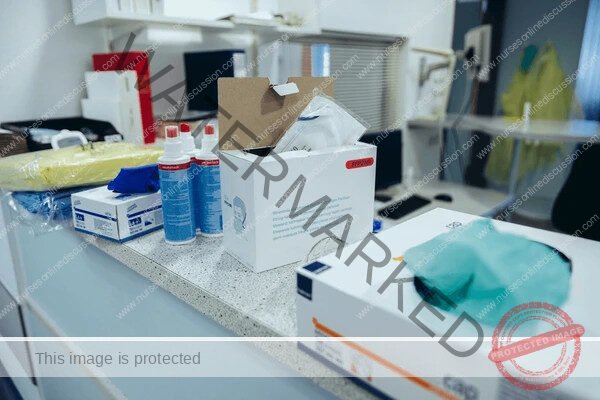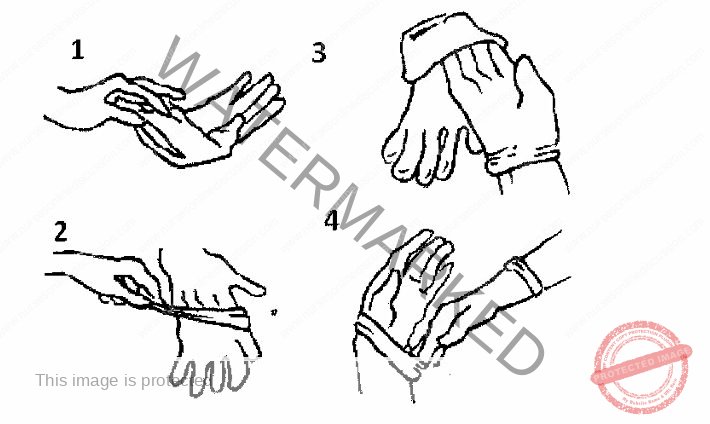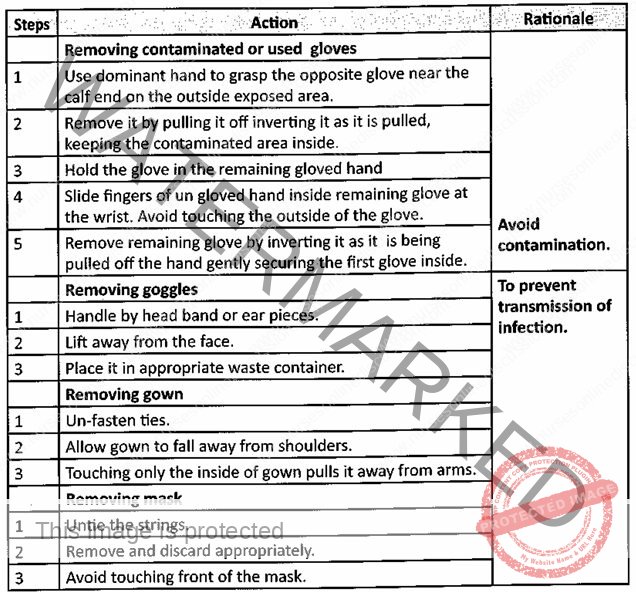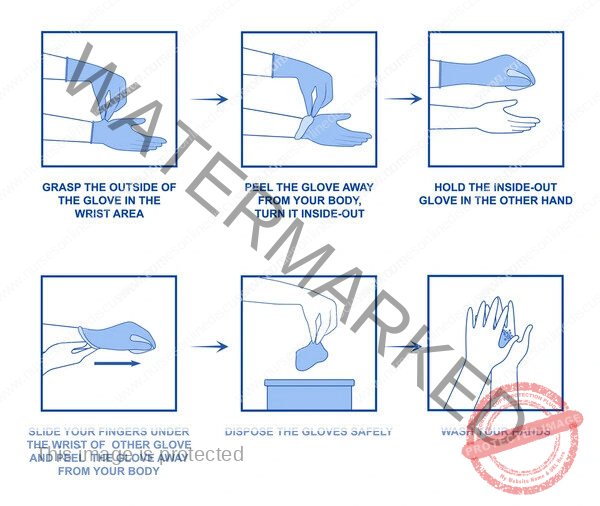Foundations of Nursing 1
Subtopic:
Use of Personal Protective Equipment

Learning Objectives
Use PPE appropriately: Demonstrate correct selection, donning, and removal of protective gear to ensure barrier nursing.
Use of personal protective equipment (PPE)
Using PPE correctly is a crucial part of infection control. PPE creates a barrier to protect you from contact with infectious materials.
- Adequate protective gears: Gloves: Wear sterile surgical gloves for procedures and examination disposable gloves for general tasks. Heavy-duty utility gloves are used for cleaning.
- Plastic aprons: Wear these for all procedures where there is a risk of splashing blood or body fluids, or when handling soiled linen from patients.
- Gowns: Wear gowns in areas like operating theatres or other areas where there is a risk of bleeding heavily.
- Eye/face protection: Protective eyewear (goggles or face shields) and face masks should be available and worn when there is a risk of splashes or sprays reaching your eyes, nose, or mouth.
- Boots: Wear boots in areas where there is a risk of spillage of blood, body fluids, or waste. Clean boots immediately after use and disinfect if there is contamination.
- Surgical masks: Wear a mask to protect your nose and mouth from splashes of body fluids.
Proctective Wear
Objectives
Identify the appropriate protective wear.
Prepare appropriate protective wear.
Put on different protective wear.
Remove different protective wear.
Requirements
Trolley
Top shelf:
Head cap, Goggles, masks
Plastic Apron
Bottom shelf:
Gum boots
Three receivers
o One for used gloves,
o One for used mask and one for used goggles.
Bucket for used gown and apron
Drum of sterile gloves
Cheattle forceps
A. Gloving
Requirements
Gloves.
Sterile surgical use gloves for invasive procedures.
Examination disposable gloves.
Heavy duty (utility) gloves.
Procedures followed for gloving
The closed method is performed when a gown is worn and the hands are within the cuff of the gown.
Open method is used when changing gloves and when a sterile gown is not worn.
Double gloving (during operations).
Points to remember
The closed method is safer and less likely to result in contamination of the surface of gloves.
Even if gloves are to be worn, hand washing must be done.
In case of torn gloves repeat the procedure.
Use gloves that are of appropriate sizes.
Steps of putting on gloves.
Touch only the restricted surface of the glove corresponding to the wrist ( at the top edge of the cuff
Don the first glove
To avoid touching the skin of the forearm with the gloved hand, turn the external surface of the glove to the donned on the folded fingers of the gloved hand, thus permitting the second hand
Once the gloved, hands should not touch anything else that is not defined by indication and conditions for gloves use

Points to remember on gloving
Hand washing must be done before putting on gloves.
Repeat the procedure if gloves are torn.
Use gloves that are of individual appropriate size.
Points to remember on protective wear
Wearing plastic apron, eye and face protectors and boots are not sterile procedures.
They should be used once and thoroughly cleaned with soap and water immediately after each use.
In case of contamination with blood or body fluids they are immediately disinfected, washed and dried and kept in a clean place.
Sterilize face masks if they are to be re-used.
Removing Protective Wear
Procedure


Join Our WhatsApp Groups!
Are you a nursing or midwifery student looking for a space to connect, ask questions, share notes, and learn from peers?
Join our WhatsApp discussion groups today!
Join NowRelated Topics
- History of Nursing
- The Role of the Nurse
- Code of Conduct for Nurses
- Principles of Professional Nursing Ethics and Etiquette
- Patient’s Rights
- Nursing and the Law
- Nursing Standards and Qualities of a Nurse
- General Principles and Rules of All Nursing Procedures
- Hospital Economy
- Use of Personal Protective Equipment
- Routine and Weekly Cleaning of the Ward
- Waste Management and Disposal
- Isolation of Infectious Patients
- Causes of Infection
- Medical Waste Disposal and Management
- Cleaning Methods
- Carry out Adequate Feeding of Patients
- Perform Bladder and Bowel Care
- Passing a Flatus Tube
- Administration of Enema
- Ward Report
- Lifting/Positioning a Patient
- Tepid Sponging
- General Principles in Patient Care
- Ethics in Nursing Care
- Principles of Infection Prevention and Control
- Body Mechanics
- Bed Making
- Vital Observations
- Bed Bath
- Oral Care/Mouth Care
- Care and Treatment of Pressure Ulcers
Get in Touch
(+256) 790 036 252
(+256) 748 324 644
Info@nursesonlinediscussion.com
Kampala ,Uganda
© 2025 Nurses online discussion. All Rights Reserved Design & Developed by Opensigma.co

